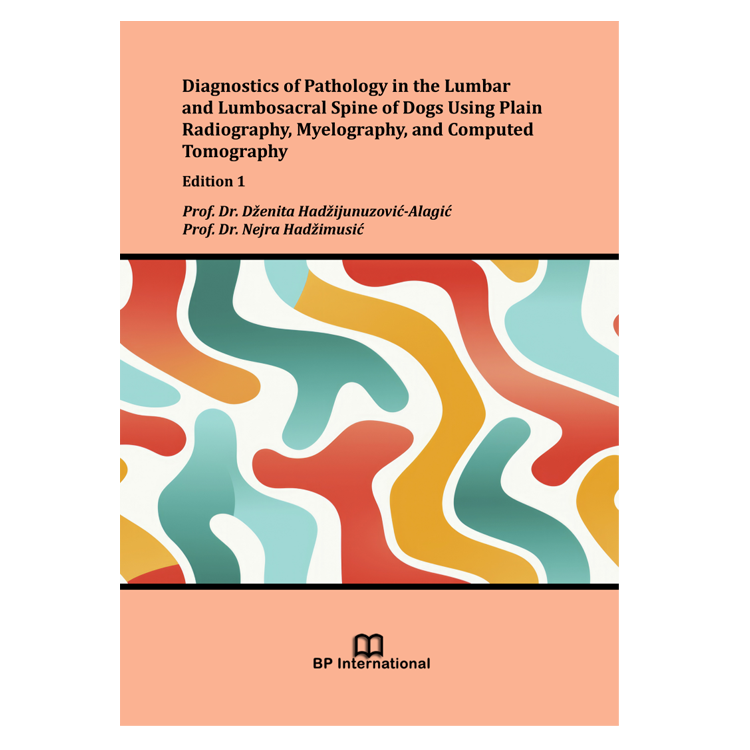The vertebral column is a central structure in the anatomy of vertebrates, playing a crucial role in mobility, support, and protection of the nervous system. In dogs, the lumbar and lumbosacral spine segments are particularly prone to a variety of pathological changes due to the animal’s active lifestyle and the diverse range of breeds. These changes can manifest as pain, mobility issues, and other neurological symptoms, significantly affecting the quality of life in affected dogs. Accurate and early diagnosis of these conditions is essential for effective treatment and rehabilitation.
This book, Diagnostics of Pathology in the Lumbar and Lumbosacral Spine of Dogs Using Plain Radiography, Myelography, and Computed Tomography, aims to provide veterinarians and radiologists with a comprehensive guide to imaging techniques used in the diagnosis of spinal pathologies in dogs. It covers the fundamental principles and practical applications of plain radiography, myelography, and computed tomography, offering insights into their advantages, limitations, and appropriate use in clinical settings. By integrating these diagnostic tools, practitioners can achieve precise localization and characterization of spinal abnormalities, leading to more informed decision-making in clinical and surgical contexts.
The chapters of this book are designed to lead readers through a detailed understanding of the anatomy of the lumbar and lumbosacral regions, the pathophysiology of common spinal disorders, and the techniques for imaging and diagnosing these conditions. Illustrated with clinical cases and high-resolution imaging, the book aims to bridge the gap between theory and practice, enhancing the ability of veterinary professionals to manage complex spinal issues in dogs effectively.
It is our hope that this book will serve as a valuable resource for both students and experienced professionals in veterinary medicine, helping to improve diagnostic accuracy and therapeutic outcomes for dogs suffering from spinal conditions.





